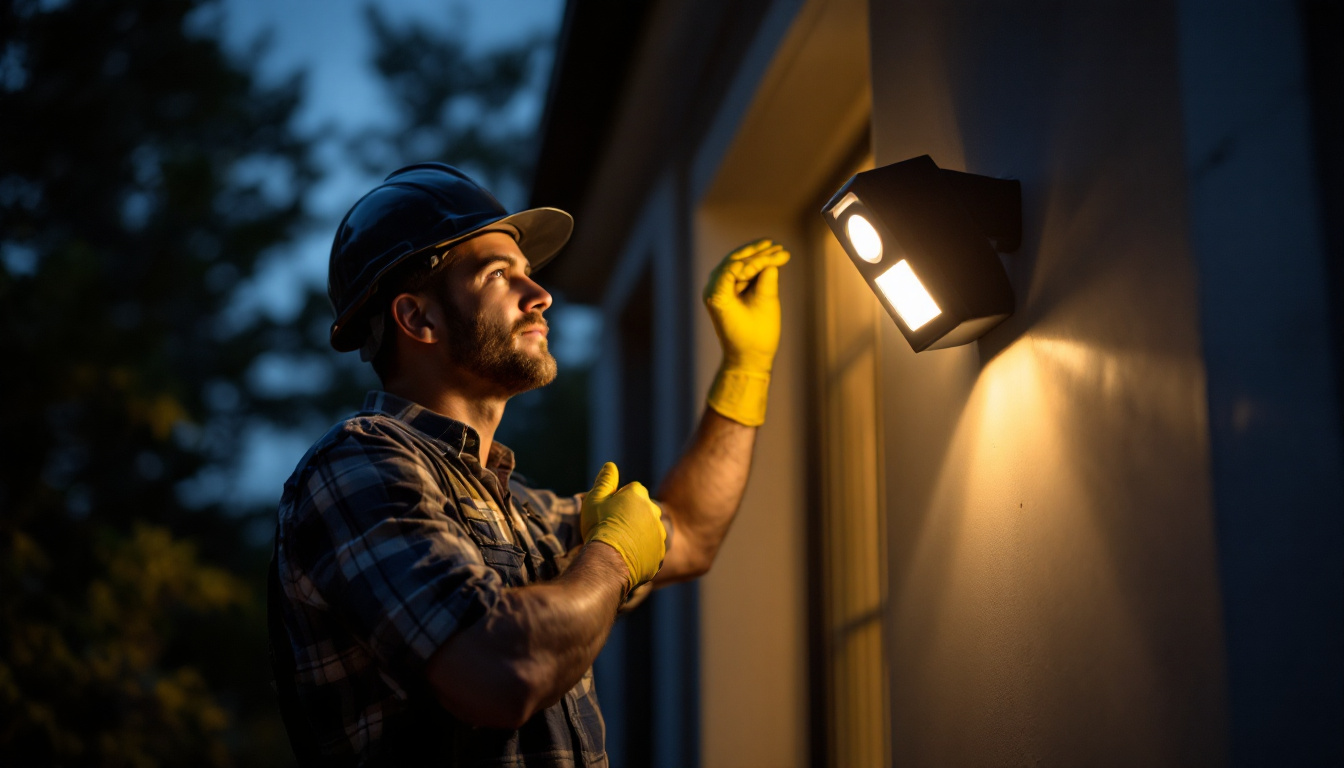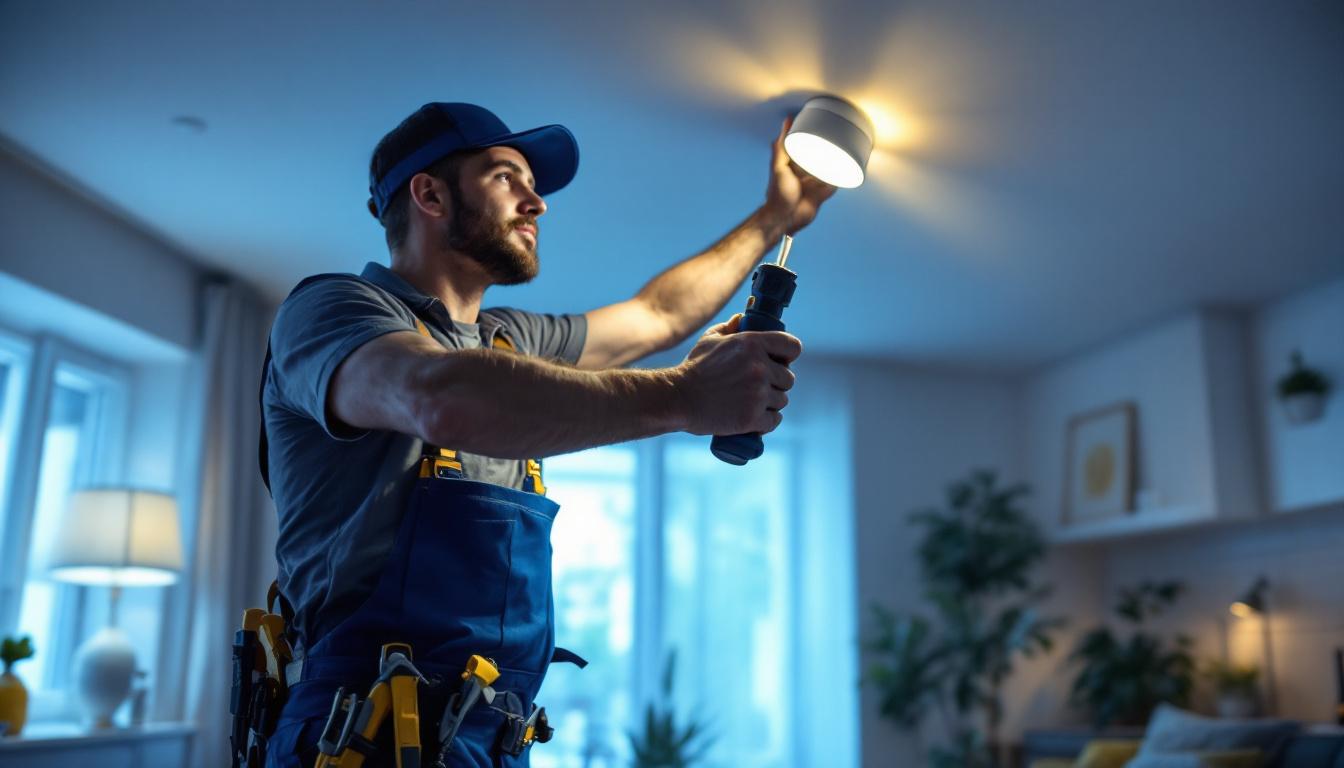
In the ever-evolving world of lighting solutions, motion-sensor lights have emerged as a popular choice for both residential and commercial applications. These innovative fixtures not only enhance security but also contribute to energy efficiency and convenience. For lighting contractors, understanding the intricacies of motion-sensor lights is essential to meet client demands and stay competitive in the market. This guide will delve into the various aspects of motion-sensor lighting, from types and benefits to installation and troubleshooting.
Motion-sensor lights are designed to detect movement within a designated area and automatically activate the light source. This technology is widely used in outdoor settings, such as driveways, pathways, and entrances, but it is also gaining traction indoors for applications like hallways and garages. The underlying technology typically involves passive infrared (PIR) sensors, ultrasonic sensors, or dual technology sensors, each with unique characteristics. The convenience and efficiency of motion-sensor lighting make it an appealing choice for both residential and commercial properties, as it not only enhances safety but also contributes to energy savings.
When selecting motion-sensor lights, it’s crucial to understand the different types of sensors available. Each type has its own advantages and ideal use cases:
Motion-sensor lights offer numerous advantages that can appeal to clients and enhance a contractor’s service offerings:
In addition to these benefits, motion-sensor lighting also contributes to environmental sustainability. By minimizing unnecessary energy use, they help reduce carbon footprints and promote a greener lifestyle. Moreover, many modern motion-sensor lights are equipped with LED technology, which further enhances energy efficiency and longevity. This combination of smart technology and eco-friendliness makes motion-sensor lights a responsible choice for conscientious consumers.
Furthermore, the versatility of motion-sensor lighting extends beyond mere functionality. Many models come with customizable settings, allowing users to adjust sensitivity levels, duration of illumination, and even the brightness of the light. This adaptability ensures that the lighting meets specific needs, whether it’s for a dimly lit garden or a bustling commercial parking lot. As technology continues to evolve, we can expect even more innovative features, such as integration with smart home systems, enabling users to control their lighting remotely or set schedules for added convenience and security.
When selecting motion-sensor lights for a project, contractors must consider various factors to ensure optimal performance and client satisfaction. The following sections outline key considerations that can guide the selection process.
The intended application and environment play a significant role in determining the best motion-sensor light for a project. For outdoor installations, factors such as weather resistance, brightness, and detection range are crucial. Indoor applications may prioritize aesthetics and integration with existing lighting systems.
For example, in a residential setting, a contractor might recommend a sleek, low-profile design for a porch, while a more robust fixture might be suitable for a commercial parking lot. Understanding the client’s needs and the environment will help in making informed recommendations.
Different motion-sensor lights come with varying detection ranges and sensitivity settings. It’s essential to assess the area where the lights will be installed to select a product that meets the specific requirements. A larger detection range is beneficial for expansive outdoor areas, while smaller, more sensitive sensors may be ideal for confined indoor spaces.
Additionally, many motion-sensor lights allow for sensitivity adjustments, enabling contractors to fine-tune the performance based on the environment. This feature can help reduce false triggers caused by pets or passing vehicles, enhancing user satisfaction.
Motion-sensor lights can be powered in several ways, including hardwired, plug-in, or battery-operated options. Contractors should evaluate the available power sources and the installation requirements for each type. Hardwired options typically offer more reliability and longevity, while battery-operated lights provide flexibility in placement without the need for extensive wiring.
Installation complexity can also vary significantly between products. Some lights are designed for easy DIY installation, while others may require professional expertise. Understanding the installation requirements will help contractors provide accurate estimates and timelines to clients.
Proper installation is crucial for the effective performance of motion-sensor lights. Following best practices can ensure optimal functionality and longevity of the fixtures. Here are some key considerations for contractors during installation:
The placement of motion-sensor lights significantly impacts their effectiveness. Ideally, the lights should be positioned at a height that maximizes their detection range while minimizing obstructions. For outdoor lights, placing them near entry points, walkways, and driveways can enhance security and convenience.
In indoor settings, positioning lights in hallways or areas frequently used at night can improve safety and accessibility. Additionally, contractors should consider the angle of the sensor to ensure it covers the desired area without being obstructed by walls or furniture.
For hardwired installations, ensuring proper wiring and connections is essential. Contractors should follow local electrical codes and guidelines to prevent hazards and ensure compliance. Utilizing weatherproof junction boxes for outdoor installations can protect connections from moisture and environmental factors.
For battery-operated lights, ensuring that batteries are easily accessible for replacement is crucial. Contractors should also inform clients about the expected battery life and maintenance requirements to ensure continued functionality.
After installation, testing the motion-sensor lights is vital to ensure they function as intended. Contractors should walk through the detection area to verify that the lights activate appropriately and adjust sensitivity settings as needed. This step can help identify any potential issues before the project is completed and handed over to the client.
Regular maintenance and troubleshooting are essential for ensuring the longevity and effectiveness of motion-sensor lights. Educating clients about these aspects can enhance their experience and satisfaction with the installation.
To keep motion-sensor lights functioning optimally, clients should be encouraged to perform regular maintenance. This includes:
Despite regular maintenance, issues may still arise with motion-sensor lights. Contractors should be prepared to assist clients with common troubleshooting scenarios:
As technology continues to advance, the future of motion-sensor lighting holds exciting possibilities. Lighting contractors should stay informed about emerging trends to offer clients the latest solutions.
The integration of smart technology into motion-sensor lighting is rapidly gaining traction. Many new products offer compatibility with smart home systems, allowing users to control lighting through mobile apps or voice commands. This feature not only enhances convenience but also allows for greater customization, such as adjusting sensitivity settings or scheduling light activation times.
With a growing emphasis on sustainability, energy-efficient motion-sensor lights are becoming increasingly popular. LED technology is leading the charge, offering longer lifespans and reduced energy consumption compared to traditional incandescent bulbs. Contractors should consider recommending LED options to clients looking to minimize their environmental impact while enjoying the benefits of motion-sensor lighting.
As security concerns continue to rise, manufacturers are incorporating advanced features into motion-sensor lights. Options such as built-in cameras, alarms, and integration with home security systems provide additional layers of protection for clients. By staying informed about these advancements, contractors can offer comprehensive security solutions that meet the evolving needs of their clients.
Motion-sensor lights represent a dynamic and versatile solution for various lighting needs, offering benefits that extend beyond mere illumination. For lighting contractors, understanding the technology, installation best practices, and maintenance requirements is essential to delivering high-quality service and satisfying client demands.
By staying informed about trends and advancements in motion-sensor lighting, contractors can position themselves as knowledgeable professionals in the field. Whether enhancing security, promoting energy efficiency, or providing convenience, motion-sensor lights are an invaluable addition to any lighting project.
As the market continues to evolve, embracing these technologies will not only benefit contractors but also contribute to a brighter, safer, and more efficient future for all.
Ready to elevate your lighting projects with the latest motion-sensor technology? Look no further than LumenWholesale for all your lighting needs. We provide contractors with high-quality, specification-grade lighting products at unbeatable wholesale prices, directly cutting out the middleman. Our extensive selection not only meets but exceeds industry standards, ensuring you deliver reliable and high-performance lighting solutions to your clients. Plus, with the convenience of free shipping on bulk orders, you can secure premium lighting at the best value — all without hidden fees or compromises. Make the smart choice for your business and experience the perfect blend of quality, affordability, and convenience. Visit LumenWholesale today and discover Wholesale Lighting at the Best Value for your next project.

Discover expert tips on troffer retrofit kit LED installations, boosting energy efficiency by up to 50%, reducing costs, and enhancing lighting quality—perfect for contractors seeking smart solutions..

Discover the essential insights lighting contractors need to meet client expectations for LED parking lot lights.

Discover the innovative strategies smart lighting contractors use to retrofit recessed lights, enhancing energy efficiency and modernizing spaces.

Discover how linkable LED shop lights are revolutionizing the lighting industry for contractors.